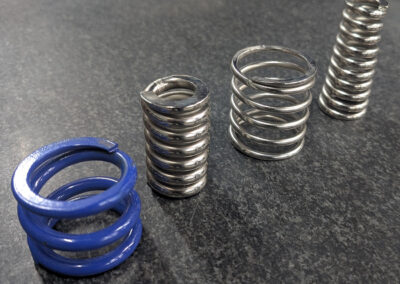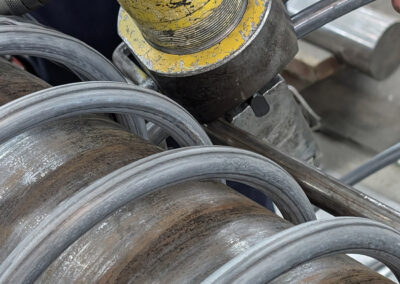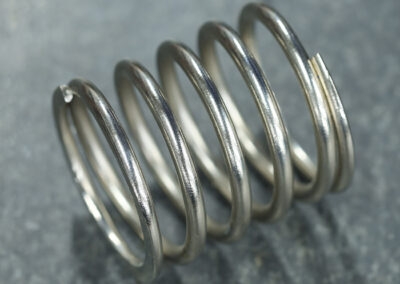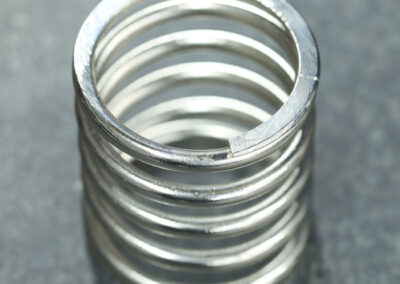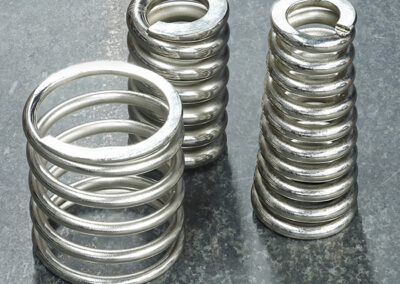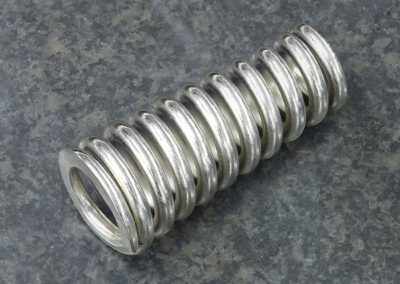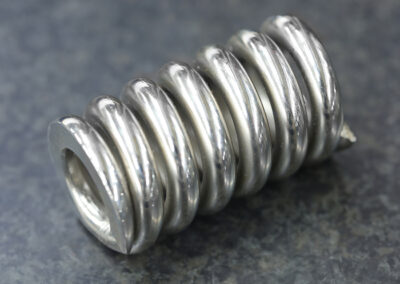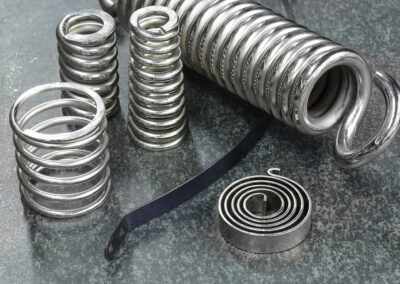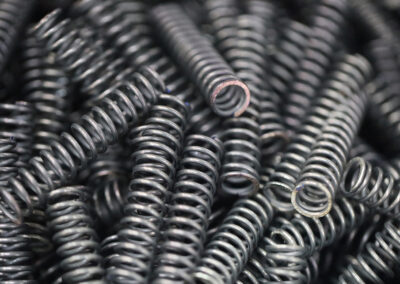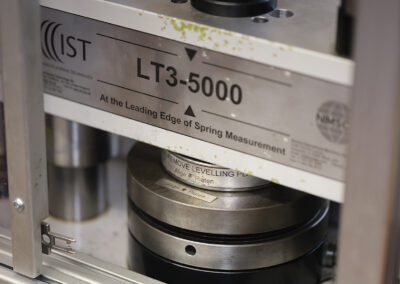Spring Type
Compression
Bespoke design & manufacture of compression springs for industry
Compression springs are the most common type of spring used in the engineering industry. They are open coiled springs which are relatively easy to design and manufacture.
Compression springs can be made from round or square wire, although round is considerably cheaper and easier to manufacture. We keep a vast selection of material sizes and types in stock, from standard spring steels to nickel alloys, all of which can be used to manufacture compression springs.
Compression Spring Variations
Conical springs
Conical springs are compression springs with a tapered, cone-shaped design, where the diameter gradually decreases from one end to the other. This design allows for progressive spring rates, improved stability, and the ability to collapse into a near-flat profile, saving space when compressed.
Nested springs
Nested springs are designed to increase strength within a confined space by placing two springs of the same free length inside one another. This configuration significantly enhances the spring rate, making it ideal for applications that require higher load capacity without increasing the overall size of the spring assembly.
Variable pitch springs
Variable pitch springs are designed with unevenly spaced coils, allowing for a progressive spring rate that changes as the spring is compressed. This design provides a softer initial response for light loads and increased stiffness as the load increases.
If you have another question about our compression spring manufacture that isn’t covered here please get in touch.
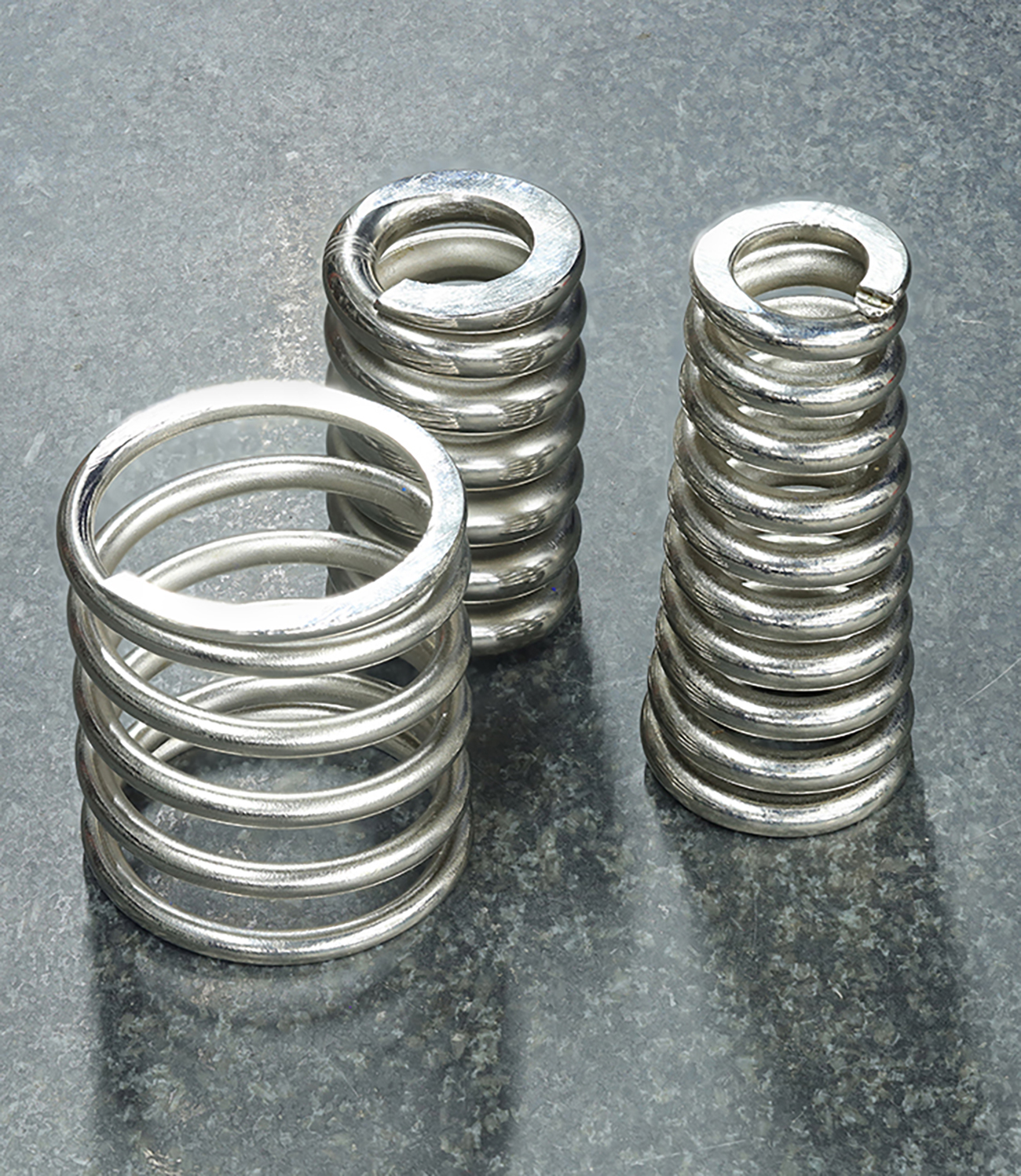
Compression Performance Considerations
The performance of a compression spring depends on the following factors:
Wire size
Increasing the wire size of a compression spring will make the spring stronger. We stock all the standard wire sizes and also a large range of non-standard wire sizes for specific requirements. A list of standard sizes is given in our technical help section here.

Diameter
As the diameter of the spring increases the strength (rate) will decrease. Also, when a compression spring is compressed the diameter will increase slightly. To avoid the spring jamming, if the spring is to work over a rod or inside a hole, specify the size of rod or the hole it is to go into.

Number of coils
The number of active coils is inversely proportional to the rate of a compression spring. This means a large number of coils will result in a fairly weak spring and a small number of coils will give a relatively strong spring. The total coils is dependant on the type of end given to the spring (see below). Springs with closed or closed and ground ends will usually have one inactive coil at each end.
Length
It is usual to specify the free length required. The solid length (fully compressed length) can easily be calculated or, if required, the working length for a specified load.
Rate

Compression spring end finish
There are three basic types of end finish for compression springs. The most common type of end finish is the closed and ground end which is the most stable type as it provides a much greater area for the spring to exert its force onto.
Compression SPring
End types
There are three basic types of end finish for compression springs:
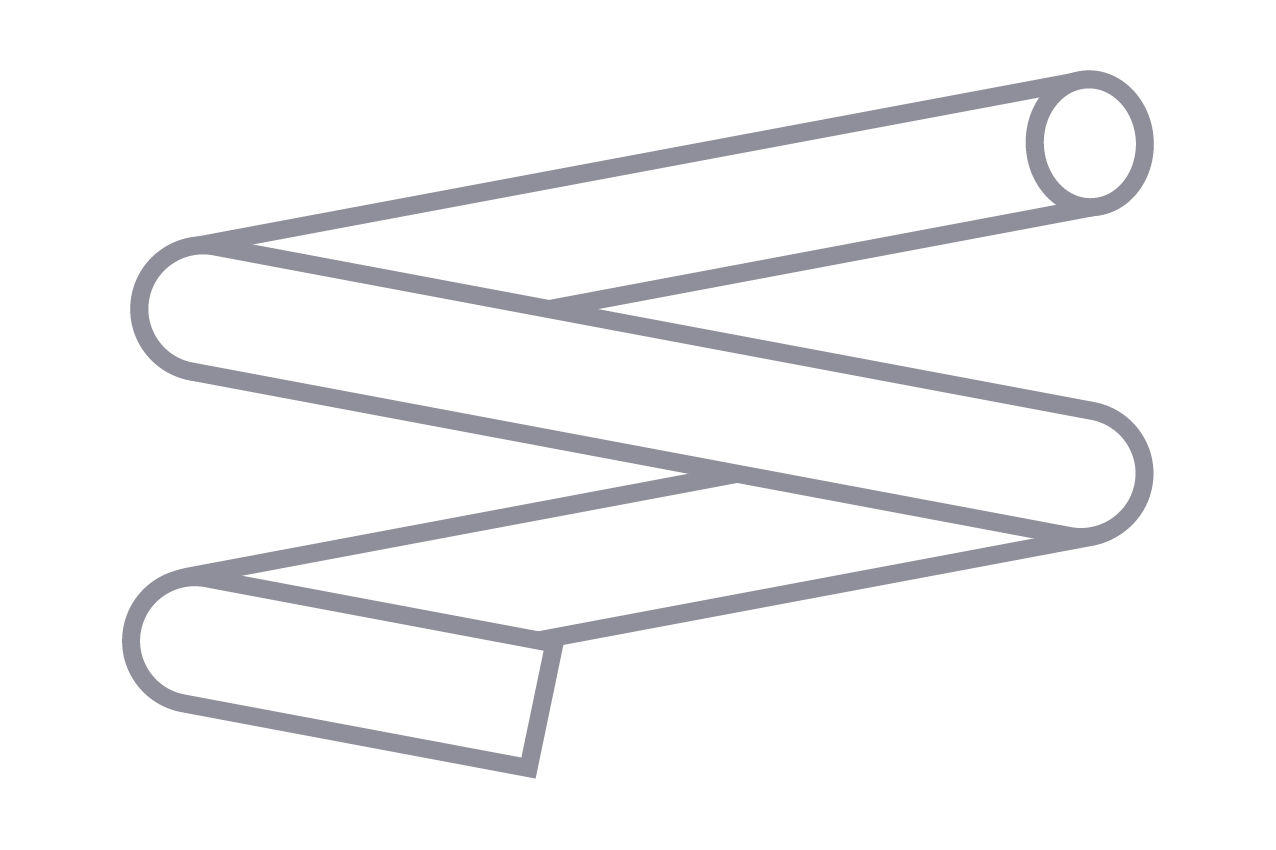
Ends closed and ground (ECG)
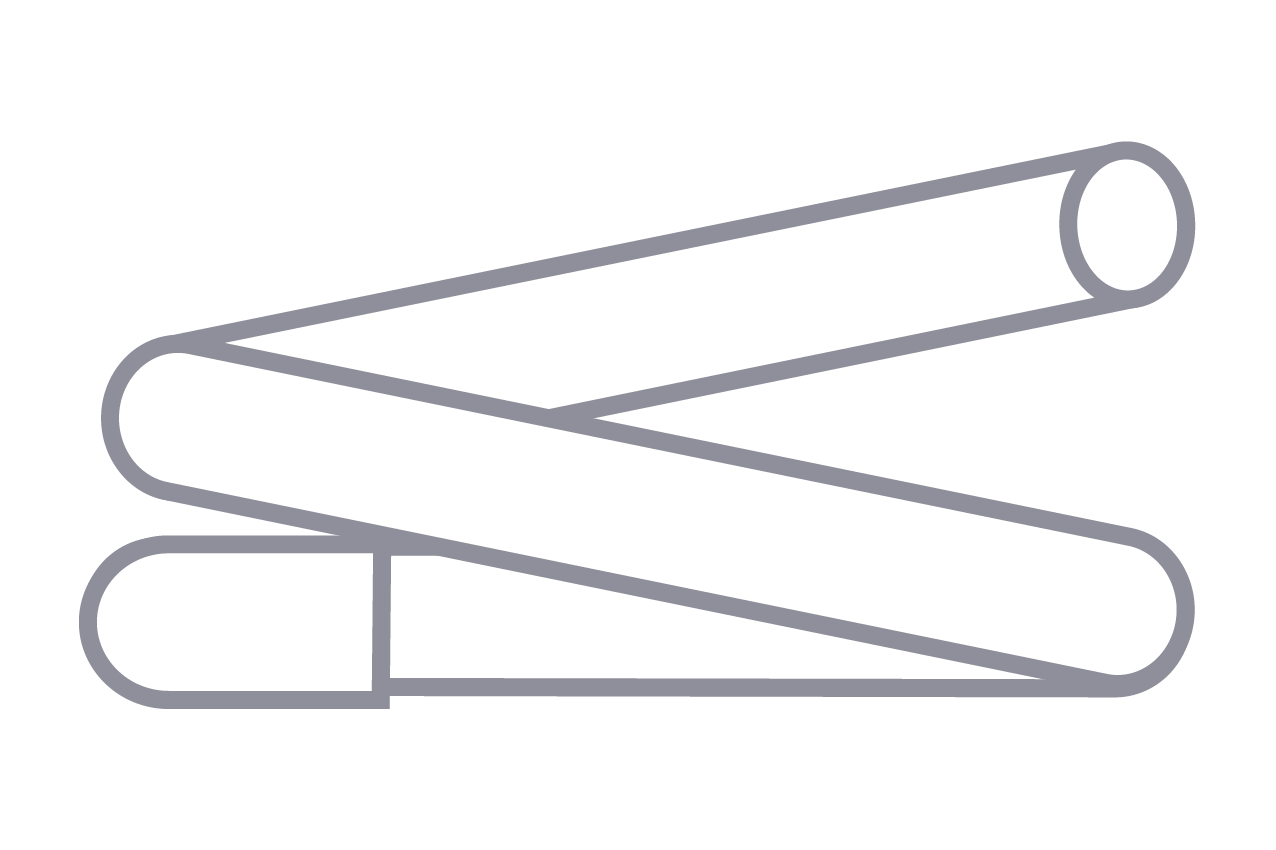
Ends closed, and not ground


